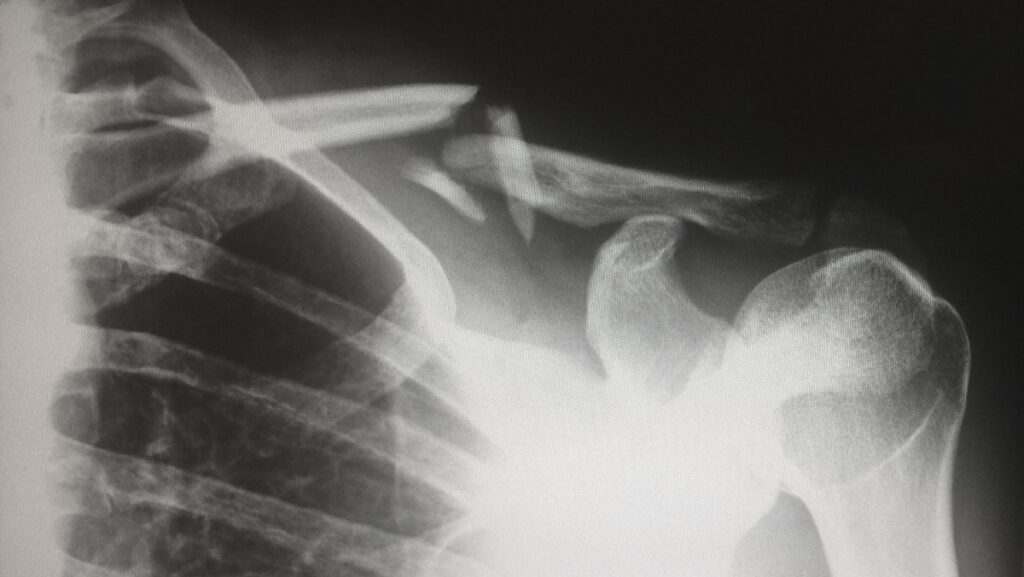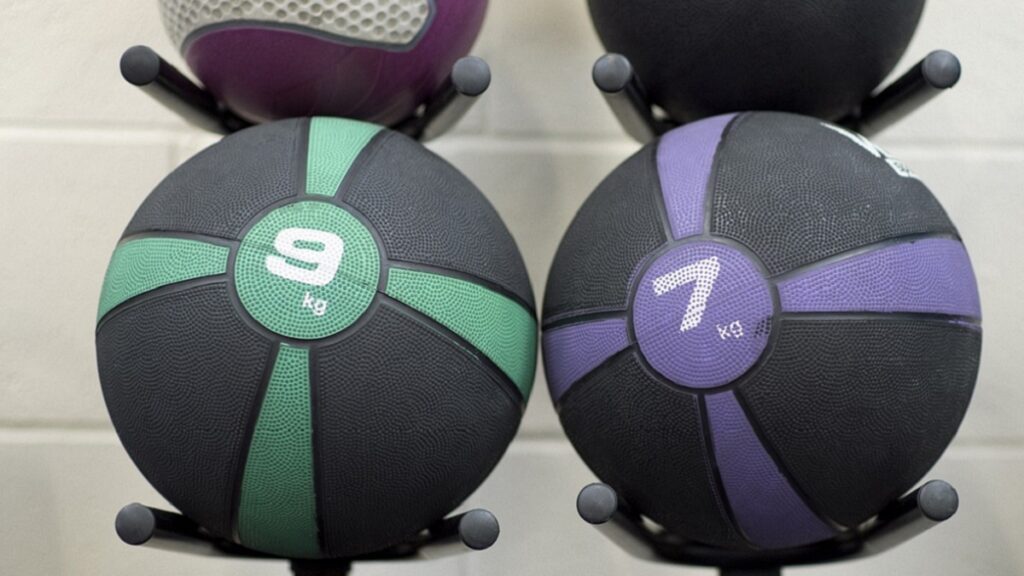Many victims of broken shoulder bones rely on fractured shoulder recovery exercises to regain their lost flexibility and strength. Once a bone is broken, the strained muscles and tendons become inflamed, stiff, and weak. Proper exercises help you quickly return to normal activities by retraining the muscles and tendons to hold firm.
A shoulder fracture is serious if the body impact is huge but less severe if the impact is little. You should start physical therapy 72 hours to 3 weeks after a shoulder fracture if no surgery was done and 1 to 4 weeks if surgery was done. A fractured shoulder takes around 6 to 12 months to stop aching for most people.
Read on for more about shoulder fractures and recovery exercises!
Is A Shoulder Fracture Serious?
A shoulder fracture may or may not be serious, depending on the degree of injury. For instance, injuries associated with the shoulder blade area are possibly severe and life-threatening. However, it would help if you swiftly took any broken shoulder to a hospital’s emergency room for a swift check-up.
The first thing you should do after an accident is to immobilize your arm. A sling works perfectly well for this. It’s looped around the bent elbow and then over the neck to keep the injured arm close to the body. Any extreme movement may worsen the injury.
You may apply ice to the affected area to reduce pain and swelling. However, you should not apply it in intervals of less than 20 minutes or bring it into contact with the skin. Why? It may worsen the pain by contracting the muscles instead of relaxing them.
The seriousness of a shoulder fracture is mostly determined by where it occurs.
Types Of Shoulder Fractures
Any shoulder fracture affects either of these three bones—clavicle, scapula, or humerus. The three bones are also referred to as the collarbone, shoulder blade, and upper arm bone, respectively.
One striking similarity of fractures in any of the three bones causes shoulder pain and limits the shoulder joint’s range of motion. Furthermore, it causes swelling and tenderness (pain upon touch).
Nevertheless, fractures to the three bones also have significant differences.
Clavicle Fractures
The clavicle is a long, slender bone that connects the shoulder to the base of the neck. Clavicle fractures are common in people of all ages.
A motor vehicle accident or a hit from contact sports like rugby will most likely cause a clavicle fracture. A large number of victims also pick clavicle injuries from falls.
Bruises, pain, and swelling over the clavicle region characterize such injuries. In some cases, a bump forms over the injured spot due to deformity of the bone or due to hematoma. Moreover, someone with a fractured clavicle finds it hard to raise the arm.
Humerus Fracture
The humerus is the long bone connecting the elbow to the shoulder’s socket. The head of the upper arm fits perfectly in the shoulder socket.
A fracture at the top of the humerus (at the head or just below it) is referred to as a proximal humerus fracture.
Although proximal humerus fractures are common in elderly people, those with osteoporosis (weak bones) are more prone to them.
A humeral shaft fracture is the breaking of the humerus in the middle. On the other hand, a distal humerus fracture occurs at the bottom end of the bone, just above the elbow joint. However, these fractures have little impact on the shoulder joint compared to the proximal humerus fracture.
Proximal humerus fractures are sometimes very serious. The very severe ones deform the bone and make you unable to move your shoulder. Although they are rarely open fractures unless caused by high-impact trauma, a case of a displaced humerus bone penetrating through soft tissue and skin is a serious one.
Swelling, bruises, pain, and a grinding sensation when you shrug your shoulder, are also indications of this fracture.
Most humeral fractures don’t require surgery unless there is bone displacement and damage to joint cartilage.
Scapula Fractures
The scapula is a flat triangular bone sticking in the upper back. It connects the chest and the arms.
Scapula fractures are rare because they can only fracture under immense impact. Thus they are mostly caused by contact sports like rugby or automobile accidents.
Fractures affecting the shoulder blade should be seriously handled since they are more likely to come with other organ damages due to the high impact. Serious scapula fractures often come with rib fractures, lung injuries, and injuries on the nerves.
Pain, swelling, and bruises are common symptoms of scapula fractures.
Most fractures involving the shoulder plate do not need surgery. However, shoulder plate fractures involving the neck of the scapula or the shoulder socket need surgery. It’s crucial to seek the services of a specialist in good time so that the treatment is offered.
Displaced and Non-Displaced Shoulder Fractures
A displaced shoulder fracture is one where the bones are broken and out of their normal anatomical positions. In contrast, a non-displaced shoulder fracture is one whereby the bone remains in its correct anatomical position.
Displaced shoulder fractures normally require surgery to correct, but non-displaced ones do not.
Fractured Shoulder Recovery Exercises
Regardless of the medical procedure used to treat your broken shoulder, fractured shoulder recovery exercises are crucial if you’re to regain full mobility of your shoulder joint. The exercises also strengthen the muscles weakened by the injury.
Without proper recovery exercises, the joint experiences chronic pain and weakness. In some cases, inflammation persists. Thus, you may not be able to perform regular tasks.
The rehabilitation program thus involves the range of motion and muscle strengthening exercises. However, the initial therapy may include a massage to the injured area to manage pain and reduce swelling. Ice is also used to reduce pain and swelling.
The severity of the injury determines the length of recovery. Fractures treated through surgery usually require around four months to heal.
Range Of Motion Exercises
The following shoulder exercises help the shoulder regain its flexibility.
Pendulum Swing Exercise
Bend forward until the upper body is at a right angle to the lower body. Then gently dangle your injured arm and let it swing backward and forward ten times.
Repeat the same action in different directions—clockwise, anticlockwise, upwards, and downwards.
Wall Walking Exercise
Stand up straight with your face towards the wall. Stretch your arms straight to your sides. Now use the tips of your fingers to “walk” up the wall as far as you can.
At the furthest point, hold for 10 seconds and then relax your arm. Now repeat the exercise at least three times.
Muscle Strengthening Exercises
The following exercises strengthen the muscles around the shoulder joint after a fracture;
Submaximal Isometrics
This exercise works well for victims of humerus fractures. With your elbow bent at 90 degrees, form a gentle fist with your injured hand.
Then, with a pillow between the fist and a wall, press into the wall (gently) for three seconds and repeat ten times.
Repeat the same procedure by placing the pillow between the back of your elbow and the wall.
Raising Dumbbells
Raising dumbbells is a rehabilitation exercise for upper arm fractures. However, it shouldn’t be done until 6-8 weeks after injury.
When doing this exercise, you should bring your shoulder plates together and, with a straight elbow, lift the dumbbell in front of you to shoulder height.
Hold for three seconds, and then gently bring it down. Repeat ten times.
When Should I Start Physical Therapy After A Shoulder Fracture?
You should start physical therapy from 0-3 weeks after a shoulder fracture. However, if the fracture was corrected by surgery, the therapy will begin 1-4 weeks after the surgery.
If surgery is not used, the physical therapist assesses the best time to start the physical exercises. The timing depends on your symptoms and the degree of bone healing. Ideally, the exercises should start 72 hours after the fracture if there’s no surgery.
However, starting with the lightest exercises like forearm rotation, finger flexion, wrist flexion, and elbow workouts would be best.
Good posture and letting the injured shoulder hang freely are also considered helpful exercises at this time.
It’s only after 3-6 weeks that you can start more strenuous exercises. These include the pendulum swing, shoulder flexion, internal rotation, and external rotation.
However, you shouldn’t start lifting heavy objects at this time. You may only start using your arm and shoulder for light activities after 6-12 weeks.
How Long Does It Take For A Fractured Shoulder To Stop Hurting?
It takes 6-12 months for a fractured shoulder to stop hurting. A broken shoulder mostly takes 6-12 weeks to heal. However, according to the Trauma and Orthopaedic Department of Royal United Hospitals Bath, symptoms like pain, stiffness, and muscle strength take 6-12 months to settle completely.
The initial injury’s severity, overall health, and age determine the recovery time. The more you age, the longer your bones and tissues take to mend. Furthermore, if you undergo surgery, the recovery time is longer.
For many people, full recovery from a shoulder fracture takes six to twelve weeks.
What Is The Fastest Way To Heal A Broken Shoulder?
The fastest way to heal a broken shoulder is immobilization and physical therapy. Restricting the movements of the broken shoulder in a sling, cast, or splint prevents unwanted slips of your injured arm and thus prevents it from further injury.
On the other hand, physical therapy strengthens the muscles around the affected area and improves flexibility. Even the smallest movement boosts blood flow to the fractured area making healing quicker.
What Is The Best Position To Sleep With A Broken Shoulder?
The best position to sleep with a broken shoulder is one which protects it from further injury, pain, and swelling. For instance, if you’re not careful with your body movements, you may lie on the broken arm, only to wake up to intense pain.
According to Dr.Chandra Sekhar, holding the broken bone in the wrong position while sleeping affects blood flow and causes swelling. He advises that you should hold it above your heart to keep the blood flow normal. If blood pools around the injury, then swelling occurs.
If you toss and turn too much during sleep, you may also make your injury worse. As I mentioned earlier, a broken shoulder needs immobility as much as possible. Thus your body must remain upright to protect the injured joint.
How To Sleep With A Broken Shoulder
Although Putting your broken shoulder to rest is a daunting task, the following tips should help:
Elevated Sleeping Position
An elevated sleeping position is the best to adopt with a broken shoulder. If you lay flat, blood may accumulate at the injured spot. Increased blood flow to that spot causes swelling that may distort the healing process and cause pain. Orthopaedic experts estimate that one should sleep inclined for four to six weeks after shoulder surgery.
Using Special Pillows
You may need body support pillows if you flip too much in sleep. These are kept on either side of your body to keep it stable.
Sleeping In The Middle Of The Bed
Sleeping on the edges of the bed with a fracture is risky. You may flip over and fall, further injuring your arm. It’s safer to sleep in the middle of the bed.
Sleeping Alone
If you sleep with your partner, you may never sleep soundly from the worry that they’ll hurt you while asleep. The best decision is to sleep alone, perhaps on your recliner or armchair. Finding the best position may take time and effort, but it’s worth it.
How Do You Know If A Fracture Is Not Healing?
You know your fracture is not healing if it still has tenderness, aches deep into the bone, and is swollen. Furthermore, a fracture whose recovery stagnates is perpetually weak and cannot bear weight.
If the pain at the site is constant and worsens with exercise, then the fracture is most likely not healing.
The fluid build-up causes swelling but should only be an issue when the injury is fresh. A limited range of motion shows that the muscles are not strengthening with time.
What Does A Fractured Shoulder Feel Like?
A fractured shoulder feels like it’s sliding out of the shoulder joint socket. In addition, the shoulder is swollen, painful to the touch, and has aches.
If the shoulder blade is affected, then breathing is painful. Breathing moves the shoulder blade and thus becomes painful with each breath.
Where Does A Fractured Shoulder Hurt?
A fractured shoulder hurts at the shoulder joint, the upper arm, the collarbone, or the upper back, depending on which part of the shoulder is fractured. However, fractures on the scapula, upper humerus, or collarbone have a similarity—they all cause some pain in the shoulder joint.
What Not To Do With A Broken Shoulder?
You should not force the arm to exercise beyond the limits of bearable pain. Furthermore,
it would help if you don’t do strenuous exercises too early into the injury. The healing process slows if you make a wrong shoulder move too early.
FAQs
Is Heat Good For A Fractured Shoulder?
Yes, heat is good for a fractured shoulder, but in the later stages of recovery. Heat spurs inflammation and therefore is not ideal in the acute inflammation stage when the injury is fresh.
What Slows Down Fractured Shoulder Healing?
Weight-bearing and movement of the broken bone fragments too early into recovery slows down the healing of a fractured shoulder. Smoking decreases blood circulation and also slows down healing.
Can You Massage A Fractured Shoulder?
Yes, you can massage a fractured shoulder. Massage forms part of the physical therapy program geared towards loosening the stiffened muscles and ligaments around the fracture, thus boosting the joint’s mobility.
Can A Fractured Shoulder Get Worse?
Yes, a fractured shoulder can get worse if it’s moved too early. Especially for displaced fractures, a careless movement may cause a fractured bone to injure adjacent muscles and cause more pain and weakness.
Can You Drive With A Fractured Shoulder?
No, you cannot drive with a fractured shoulder. You should only drive when your hand is no longer in a sling and the shoulder muscles have completely healed.
When Can I Start Lifting After a Fracture?
You can start lifting after your bone begins to heal, but it should be gradual, as your doctor advises. It should start from lightweight to full weight lifting exercises. To start lifting, you may have to wait 6-8 weeks for a minor fracture and 20 weeks for a major fracture.
Conclusion
Fractured shoulder recovery exercises are crucial for the healing process. Your shoulder joint may never regain flexibility and strength without a rehabilitation program. Furthermore, it doesn’t matter what caused the fracture or the treatment procedure used. A fracture treated with surgery needs as much exercise as one treated without surgery.
A shoulder fracture may or may not be life-threatening. The earliest you make it to the hospital’s emergency section after the injury, the better. The broken bone, displaced from its place, may have got in the way of a delicate organ. Seeking the earliest medical advice may actually save your life.
Check out our blog to read more on different shoulder injuries and how to tackle them.



